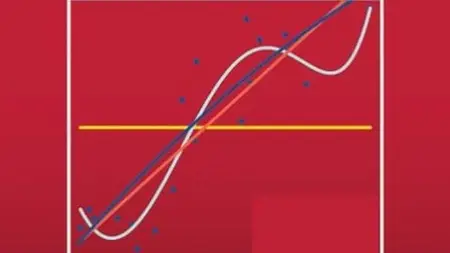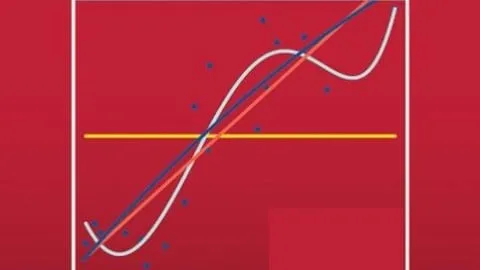Statistics With Python
Published 8/2025
MP4 | Video: h264, 1920x1080 | Audio: AAC, 44.1 KHz
Language: English | Size: 2.15 GB | Duration: 2h 57m
Published 8/2025
MP4 | Video: h264, 1920x1080 | Audio: AAC, 44.1 KHz
Language: English | Size: 2.15 GB | Duration: 2h 57m
Unlocking Data Insights: Statistics with R and Python
What you'll learn
Introduction to Data and Programming Environments
Descriptive Statistics
Probability and Probability Distributions
Sampling and Estimation
Hypothesis Testing Fundamentals
Comparing Groups
Categorical Data Analysis
Correlation and Regression
Requirements
Math
Pc use
Description
Welcome to "Statistics with R and Python," your gateway to mastering the art and science of data analysis with Ai Tools Engeneering- In today's data-driven world, the ability to extract meaningful insights is crucial, and this course provides you with the skills to do so, leveraging two of the most powerful tools in a data professional's arsenal: R and Python. This course is meticulously designed for hands-on learning. You'll begin by building a solid foundation in descriptive statistics and data visualization, transforming raw data into compelling narratives using libraries like ggplot2, Matplotlib, and Seaborn. We then delve into inferential statistics, guiding you through the principles of probability, hypothesis testing, and confidence intervals, enabling you to draw valid conclusions from your data. A significant portion of the course is dedicated to regression analysis, where you'll learn to build and interpret linear and logistic models for forecasting and understanding relationships. Through hands-on exercises and real-world case studies, you'll gain expertise in data cleaning, manipulation, and analysis workflows. By the end of this journey, you'll not only understand statistical concepts but also possess the practical coding skills in both R and Python to effectively apply them across various domains. Join us to transform data into actionable insights! Use data with AI apps to build reliable statistical predictions and get closer to the world of machine learning.“This course contains the use of artificial intelligence.”
Overview
Section 1: Introduction to Data and Programming Environments
Lecture 1 Intent of Course and What You Will learn
Lecture 2 What is Data Science and Statistics
Lecture 3 Introduction to Python Lybraries - Anaconda and Streamlit use
Lecture 4 Import and Read Csv Data in Python Script
Section 2: Covariance - From Theory to Practise
Lecture 5 Covariance Theory Explain
Lecture 6 Covariance Exercise with Python
Section 3: Normal Distribution
Lecture 7 Normal Distribution
Lecture 8 Normal Distrubution Excercise
Section 4: Correlation and Regression Data Analysis
Lecture 9 Correlation - Regression and Data Analysis Introduction
Lecture 10 First Exemple
Lecture 11 Correlation coefficients (Pearson, Spearman)
Lecture 12 Simple Linear Regression
Lecture 13 Multiple Linear Regression
Lecture 14 Introduction to Logistic Regression (for binary outcomes)
Section 5: Probability and Probability Distributions
Lecture 15 Basic probability concepts (events, sample space, conditional probability)
Lecture 16 Random variables
Lecture 17 Common probability distributions (Bernoulli, Binomial, Poisson, Normal, t-distri
Lecture 18 Central Limit Theorem
Section 6: Hypothesis Testing Fundamentals
Lecture 19 Hypothesis Testing Fundamentals Concept in Probabilty and Statistics
Lecture 20 Null and alternative hypotheses
Section 7: Descriptive Statistics
Lecture 21 Descriptive Statistics - Basic Introduction
Lecture 22 Types of data (qualitative, quantitative, nominal, ordinal, interval, ratio)
Lecture 23 Measures of central tendency (mean, median, mode)
Lecture 24 Measures of dispersion (range, variance, standard deviation, IQR)
Lecture 25 Shape of distributions (skewness, kurtosis)
Lecture 26 Data visualization (histograms, box plots, bar charts, scatter plots) - Python
Section 8: Comparing Groups
Lecture 27 Independent samples t-test
Lecture 28 Paired samples t-test
Lecture 29 ANOVA (One-way, Two-way)
Lecture 30 Non-parametric tests (Mann-Whitney U, Wilcoxon signed-rank, Kruskal-Wallis)
Section 9: Categorical Data Analysis
Lecture 31 Categorical Data Analysis and Chi Test Introduction
Lecture 32 Chi-square test of independence and Chi-square goodness-of-fit test
Lecture 33 Contingency tables
Lecture 34 Error estimation in Statistical Data Analysis
Engeneering,Math



